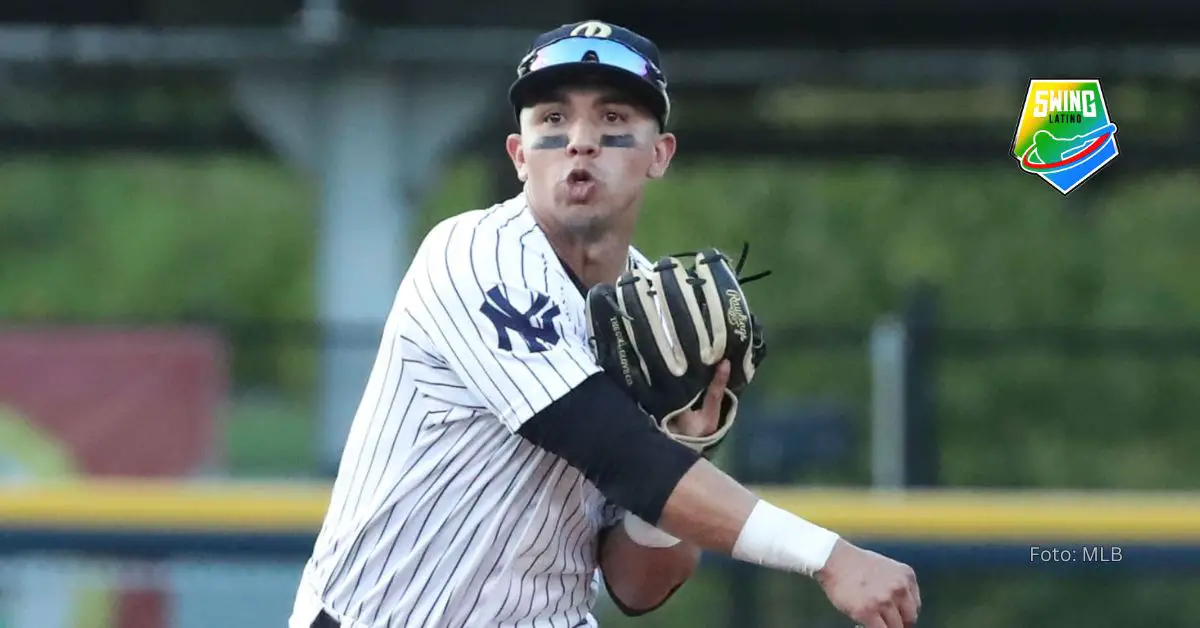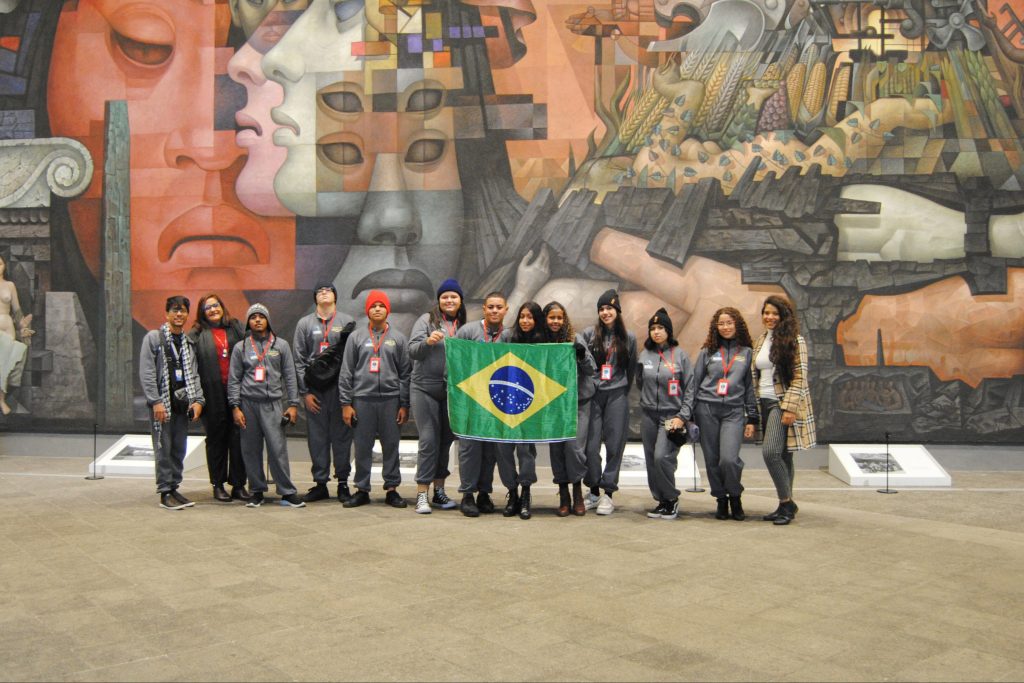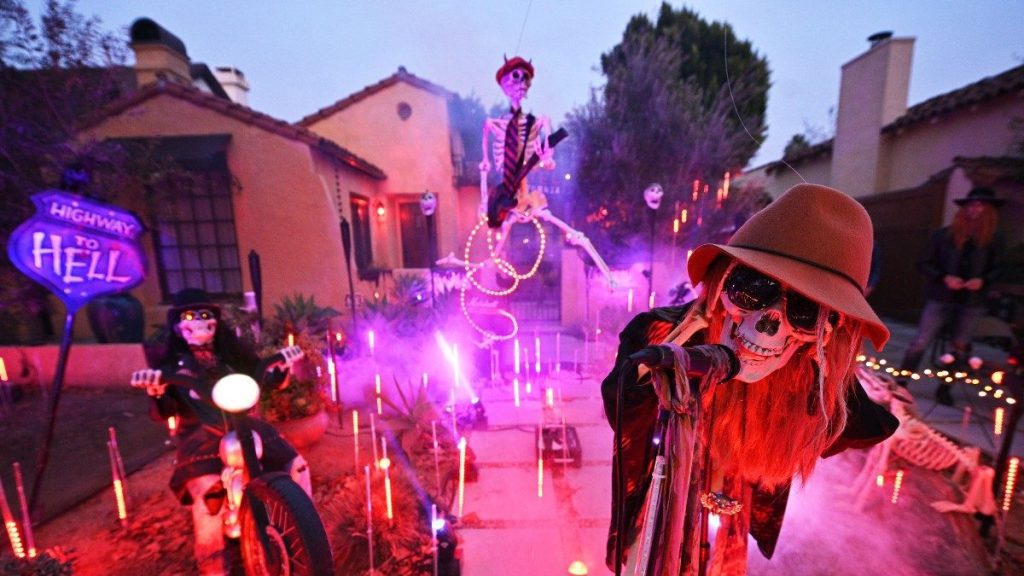(CNN Spanish) — Every October 31, the streets of the neighborhood are filled with witches, superheroes and heroines, terrifying clowns, vampires, ghosts, monsters or any costume that the imagination allows. Halloween or “night of the witches” is a popular celebration in the United States, but its influence has extended beyond the Anglo-Saxon world to many cultures adopting it. How can we get clothes by going door to door threatening to “trick” if we don’t get “candy”?
The word Halloween is a shortened version of the phrase All Hallows Eve or All Hallows Evening (“Night of All Saints”, in Spanish).
On the first day of November, families around the world, from France to Mexico, celebrate All Saints’ Day, a Christian festival usually marked with family gatherings and silent prayers honoring all the saints.
In medieval England, the festival was called All Hallows and took place on November 1. Eve is known as All Hallows Eve or Halloween, which is why it is celebrated every October 31. The day after All Saints’ Day is All Souls’ Day, November 2nd. These days were designated as the celebration of saints and a time to pray for the departed souls.
But when and where did it start? Halloween’s origins date back to the Celts and a pagan festival. Here we tell you:
Celts, a pagan festival and visitation of the dead
Halloween’s origins date back to an ancient pagan festival celebrated by the Celts over 2,000 years ago called Samhain. In England, Ireland and northwestern France, the festival was celebrated on 1 November to commemorate the beginning of winter and the end of the harvest. The Celts believed that Samhain was the time when the souls of the dead returned to the world of the living to return to their homes.
“What we call November, or the first part thereof, seems to be the time appointed for the end of the harvest and the beginning of winter among the peoples who spoke or spoke the Celtic languages, chiefly represented by the Irish today.” Explain To CNN Joseph Nagy, professor at Department of Celtic Languages and Literatures at Harvard University.
Although it is not clear how the ancient Celts celebrated Samhain, due to the lack of written records, fires are said to have been lit on top of mountains during the festival to ward off evil spirits. According to Encyclopedia Britannica. The tradition of wearing costumes started here when villagers wore masks to ward off the belief of ghosts.
The trick or treating tradition began in parts of the United Kingdom and Ireland. In return for prayers people went from house to house asking for small loaves of bread called “soul” – “soul cakes”.
Elders also went from house to house and asked for food and drink in exchange for a song or dance.
Jack-o’-lanterns (traditional carved pumpkins used as lanterns) are a symbol of Halloween. People in Ireland and Scotland first used beets or turnips as lanterns at Halloween.
An Irish legend says that jack-o-lanterns are named after a man named Jack who could not go to heaven or hell and was forced to walk the earth forever with only coal from hell to light his lamp.
The name jack-o-lantern may have been derived from the night watchman who operated the street lights each night.
Immigrants from Ireland and Scotland brought Halloween to America in the 19th century. Haitian and African immigrants brought voodoo beliefs about black cats, fire and witchcraft.
Samhain to Halloween in the US
Halloween decorations are seen in a garden as the sun sets on October 20, 2018 in Washington, DC. (Credit: ERIC BARADAT/AFP via Getty Images)
The country that celebrates Halloween the most is America. Also known as “Halloween,” the holiday came to America with Irish immigrants (with all the costumes) from the mid-nineteenth century. In the 20th century, Halloween became one of the main festivals, especially popular among the little ones.
“The celebration really took root in America when the Irish immigrants arrived, and they used to go door-to-door begging for things like fruit and nuts,” Nagy said.
Later, over time, Halloween became more commercialized and today became a celebration of candy not only in America but also in other countries.
Now it is customary to dress up in a variety of costumes: from witches and vampires to superheroes and terrifying clowns. The only limit to dressing up for Halloween is your imagination. Once in disguise, take to the streets of your neighborhood and ask for the famous “Trick or Treat” to collect as many sweets as possible in your pumpkin. The dark decoration of houses and buildings in America is very striking: carved pumpkins, fake spider webs, tombs, witches or skeletons, paper bats, orange neon lights and inflatable dolls are part of the scenery.
Families often share scary stories around the fire or snuggle up to watch scary movies.
With information from CNN’s Jacqueline Howard

“Music ninja. Analyst. Typical coffee lover. Travel evangelist. Proud explorer.”


:quality(85)/cloudfront-us-east-1.images.arcpublishing.com/infobae/UXWYDUR7AZHNZOCISYCCM3SM3M.png)
:quality(85)/cloudfront-us-east-1.images.arcpublishing.com/infobae/H6HA6TJTRCI5NXZ4SJTKAMLKLM.jpg)
:quality(85)/cloudfront-us-east-1.images.arcpublishing.com/infobae/U6NINPMRGRHYJFKUXGHD6E72BM.jpg)


More Stories
He went to Chicago and saw something that almost no one had revealed when he arrived
“Leadership of the Americas Award” to OAS Louis Abinader | AlMomento.net
Victor Barra, head of a dangerous Venezuelan criminal network caught in New York by a stupid mistake